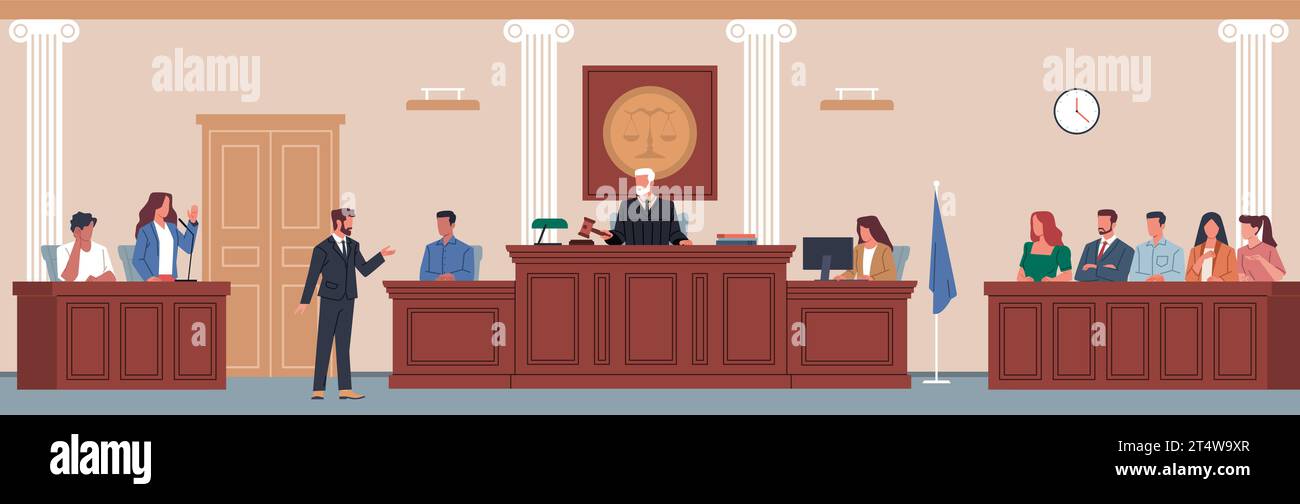Trial Presentation Designing Compelling Displays for Courtroom Success
Trial Presentation Designing Compelling Displays for Courtroom Success
Blog Article
Mesmerize the Jury: Necessary Components of a Powerful Test Discussion
Essential components such as comprehending the target market, crafting an engaging narrative, and grasping spoken and non-verbal interaction are essential parts of an efficient discussion. As these elements link, they form a cohesive method that not just notifies yet additionally engages jurors on several degrees.

Comprehending Your Target Market
Recognizing your audience is a critical element of reliable test discussion. A successful presentation rests on the capacity to understand the demographics, values, and tendencies of jurors. This understanding notifies exactly how debates are framed, evidence is presented, and sob stories are crafted, guaranteeing that the message reverberates with the jurors on an individual degree.
Research suggests that jurors originated from varied histories and may have varying levels of understanding pertaining to legal procedures (trial presentation). Therefore, it is important to prevent legal lingo that might push away or perplex them. Rather, utilizing clear, relatable language promotes engagement and understanding. In addition, recognizing the jurors' possible biases and life experiences allows the test speaker to expect objections and address concerns proactively.
Reliable test presentation likewise involves observing jurors' responses throughout the process. Being attuned to non-verbal hints can offer understanding right into their interaction and understanding, permitting real-time modifications in strategy. Ultimately, a profound understanding of the target market not only improves interaction but also develops connection, enhancing the possibility of a beneficial result. Engaging with jurors as individuals instead of a cumulative system is necessary in fostering a solid connection in the court.

Crafting an Engaging Narrative
Crafting an engaging narrative is crucial in leading jurors with the complexities of a case. A well-structured story not only streamlines elaborate lawful concepts but additionally involves jurors on a psychological level, making the details much more relatable and remarkable.
This message ought to resonate with the jurors' values and experiences, promoting a link that goes beyond mere truths. This chronological technique can assist jurors adhere to the progression of events, highlighting cause and impact.
Incorporating human aspects-- such as personal tales or stories-- can further enhance the narrative's effect. These aspects stimulate compassion, enabling jurors to visualize the repercussions of the situation on actual lives. In addition, employing a consistent theme throughout the presentation reinforces the primary debate, making it less complicated for jurors to retain crucial points.
Eventually, a compelling narrative changes a trial presentation from a mere address of realities right into a persuasive story that captivates the court, urging them to mull over with both factor and great post to read feeling.
Using Visual Aids
Including aesthetic help into a trial discussion can dramatically improve jurors' comprehension and retention of information. Visual products such as graphes, representations, photographs, and video clips can change complicated legal principles and proof into easily absorbable styles. By engaging multiple detects, these help enable jurors to visualize the situation's crucial elements, making it easier for them to adhere to along and comprehend elaborate information.
Additionally, well-designed visual help can highlight crucial points and highlight relationships in between different items of proof. Timelines can effectively show the sequence of events, while annotated pictures can make clear particular information appropriate to the case. This not just aids in understanding yet also enhances the narrative provided by the lawyer.
Overly complicated or messy visuals may bewilder jurors and take away from the message. Ultimately, reliable visual communication can be an effective device in encouraging jurors and assisting them get to notified final thoughts.
Understanding Verbal Interaction
Reliable spoken communication is important in a test presentation, as it offers as the key methods with which lawyers communicate their disagreements and attach with jurors. Grasping this skill involves quality, persuasion, and engagement. Lawyers need to articulate their factors clearly and briefly, avoiding legal lingo that might puzzle jurors. Simplicity in language cultivates understanding and assists jurors grasp intricate issues provided during the test.
In addition, tone and pacing substantially influence just how messages are gotten. A confident tone shares authority, while ideal pacing permits jurors to absorb details without really feeling bewildered. Lawyers need to likewise vary their vocal inflections to emphasize bottom lines and preserve jurors' interest throughout the discussion.
Furthermore, the company of spoken arguments is essential. Structuring the narrative logically and coherently aids jurors follow the lawyer's logic, making it easier for them to preserve essential information. Making use of convincing techniques, such as storytelling, can additionally improve the psychological resonance of the debates presented, thereby developing a much more extensive link with jurors.
Ultimately, grasping spoken communication not just enhances an attorney's situation but likewise cultivates count on and relationship with the jury, substantially enhancing the chances of a favorable decision.

Involving With Body Language
Nonverbal interaction plays a crucial role in see this site trial discussions, usually communicating messages that words alone can not express. Body movement, encompassing motions, posture, faces, and eye contact, dramatically read this article influences how jurors view the integrity and sincerity of the speaker. A positive position, with shoulders back and an open posture, can infuse trust fund, while closed-off body movement may recommend defensiveness or unpredictability.

Facial expressions need to show the feelings connected with the instance, strengthening the story being provided. A sincere expression throughout an emotional moment can generate empathy and strengthen the emotional allure. Inevitably, understanding body language is necessary for reliable test discussions, as it improves verbal interaction and establishes an engaging presence that resonates with the jury.
Verdict
To conclude, astounding the court demands a critical method that includes understanding the audience, crafting a compelling narrative, making use of aesthetic aids, understanding verbal communication, and involving via body language. Each component plays an important function in producing a powerful trial discussion that resonates with jurors on both emotional and intellectual levels (trial presentation). By incorporating these components successfully, lawyers can significantly improve their capability to convince and affect court decision-making
Report this page